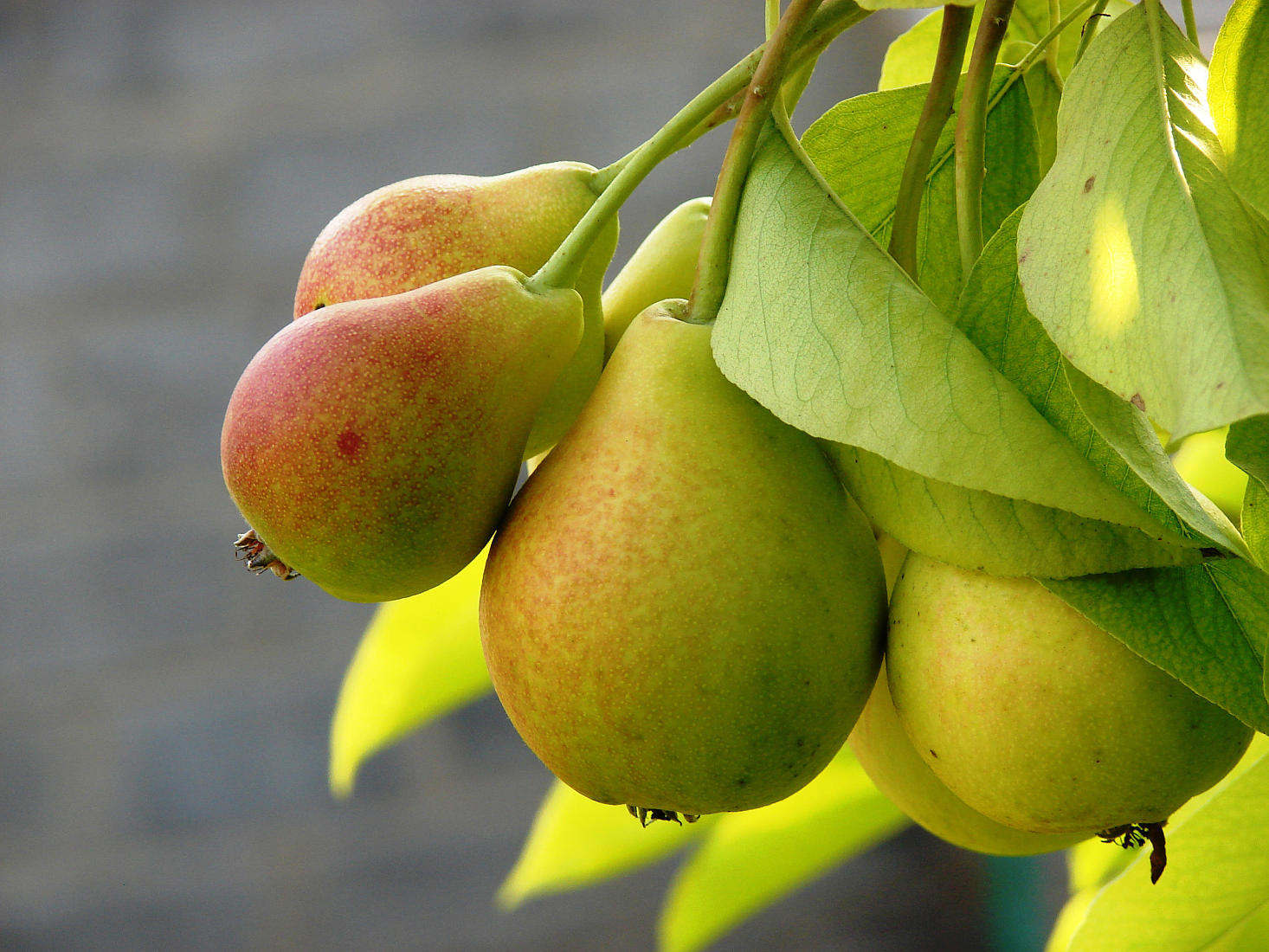
Pear Noyabrskaya belong to the autumn varieties. She was bred in the Far East in the 50s of the last century. The creator of the November pear is breeder A.V. Bolognaev. He crossed the winter decan with the Ussuri-looking pear and received a new hybrid, which is still held in high esteem by gardeners. The variety is bred in the Khabarovsk and Primorsky Territories, as well as in the Amur Region. Due to its resistance to severe weather, this pear has taken root in other regions of Russia.
Content
Description of the November pear
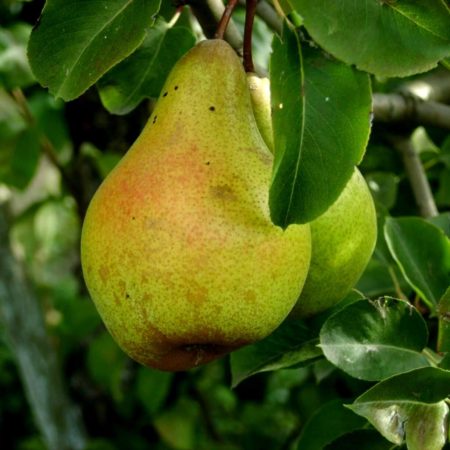
It is a tall and strong tree with sprawling branches. Crohn grows in the shape of a large round pyramid. The angle between the trunk and branches is 90 degrees. The leaf is dense, densely green, oval or round. Fruits begin to appear on branches that reach two or three years of age. Pear Noyabrskaya is an early ripening variety with high yields. Each tree gives up to 60 kg of fruit annually.
The fruits of a pear are medium in size, each of them weighs about 80 grams. When grown in warm regions, the fruits become large - up to 350 grams. They grow like a ribbed egg, with grooves and stripes on the skin. The color of the fruit is green with a yellowish tinge. One side is often decorated with a red blush. Symmetrical small dots are visible on the skin surface. Fruit with a dense white flesh, juicy and sweet, with a pleasant sour taste. Pear aromatic, strong, tasty.
This variety ripens in late autumn or early winter, so harvesting is planned in late autumn. Under adverse weather conditions, the fruits are harvested in early September, and they ripen safely in a dry room. It takes no more than 30 days to ripen a pear. You can store it until February, and if you put the fruits in the freezer, they will retain their taste until the next spring.
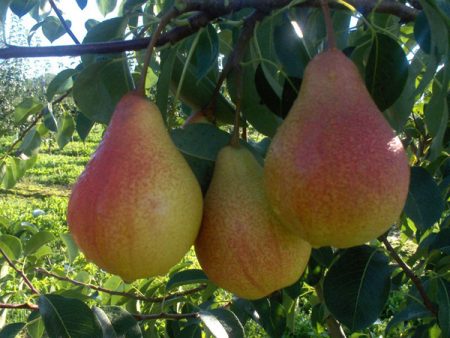 You may be interested in:
You may be interested in:The variety has excellent taste, so it is used:
- in fresh form;
- in jam;
- in dry form;
- in compote;
- in charlotte and other pastries.
For excellent taste Noyabrskaya pear is considered one of the best European varieties. It is grown in many countries of Western Europe, as well as in Ukraine and Belarus.
Advantages and disadvantages of the variety
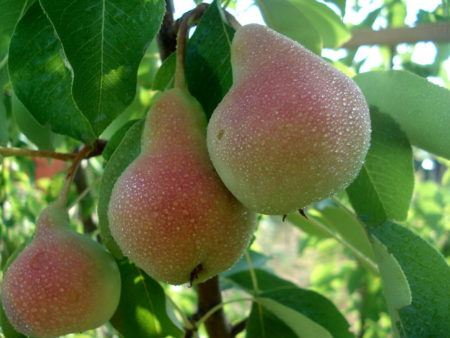
This variety has the following advantages:
- resistance to fungal and bacterial infections;
- resistance to direct sunlight;
- precocity;
- high yields. Each tree bears fruit annually;
- suitability for sale (fruits can be stored for a long time, and they do not deteriorate during prolonged transportation).
Of the shortcomings, different sizes of fruits are noted. Pears grow large, but it happens that among them there are many small ones. Too picky people may not like the modest "outfit" of the Noyabrskaya pear: ribbed skin with specks and uneven sides. When planting this variety, it must be borne in mind that it will not bear fruit without pollinating trees.
Pollination Recommendations
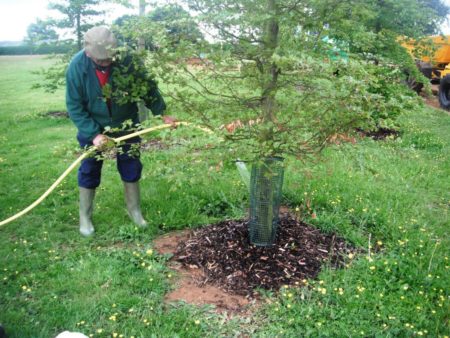
Pear Noyabrskaya is a self-fertile variety. Its flowers are not endowed with the ability of cross-pollination.As suitable pollinators, gardeners use the following pear varieties:
- Williams (summer grade);
- Hoverla;
- Klapp's favorite;
- Conference
Pollinators are planted simultaneously with the pollinated variety. It is necessary to plant several trees of different varieties in the neighborhood. The distance between them should be from 10 to 15 meters.
Resistance to diseases and pests, adverse conditions
The November pear has good immunity. She rarely gets sick fungal and bacterial infectionsbut prone to attacks by harmful insects. Shortly before flowering, you need to hold spraying tree crowns insecticidal agent. After 14 days, the treatment is repeated again.
Cuttings of fruits are remarkable for their amazing strength. Thanks to them, pears do not fall even in strong winds and rain. The weak point of a tree in a harsh climate is the crown and trunk. In cold and humid regions, tree branches are pressed to the ground and provide them with reliable shelter.
Agrotechnical events
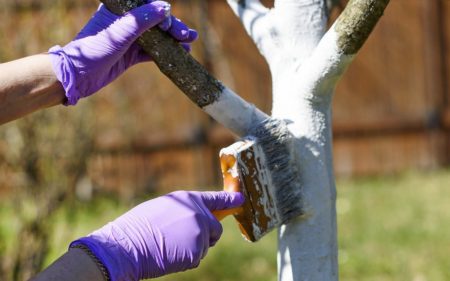
The best place for planting the Noyabrsk pear is the southern part of the site, which is located on a hill and is protected from strong winds.
- 6 months before planting, dig a hole, taking into account the root system of an adult tree (70x70 cm);
- Before planting, the nutrient mixture is poured into the pit. It consists of rotted compost, ash, phosphate and potassium-based fertilizer;
- put a peg in the center of the pit;
- the seedling is set strictly in the center of the fossa, with neat expansion of its root system;
- sprinkle the roots with earth;
- a distance from 2 to 3 cm should remain to the neck of the root;
- the planted tree is tied to a peg.
It remains to water and mulch the earth. For mulching, wood sawdust or other organic substances are used.
In the summer after planting, young seedlings are watered 3 to 4 times a day, with preliminary loosening of the soil. The soil in which the trees are located should always be slightly moist. In the dry period, the rain method of irrigation is used. Thanks to it, trees get moisture through the foliage.
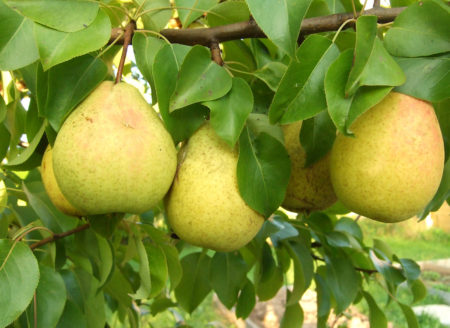
Until the young tree grows stronger, weeds are regularly harvested near it. For an adult pear, weeds are not dangerous. Loosening the soil is enough for them. Young annual trees need to form a crown. To do this, the main branch is made half as long. Two-year-old trees give the necessary shape to skeletal branches. Ripe pears make sanitary pruning in spring and in the fall. They cut the old branches, remove the weak and sick.
In cold winters without snow cover, seedlings can die. Before the winter season, the soil around them should be mulled with a 30 cm thick peat bog. Old trees are sanitized in spring and autumn, removing old, dry and diseased branches. In spring and summer, the pear is fed with organic and mineral fertilizers. After the autumn harvest, it is fertilized with quail manure, compost or ash.
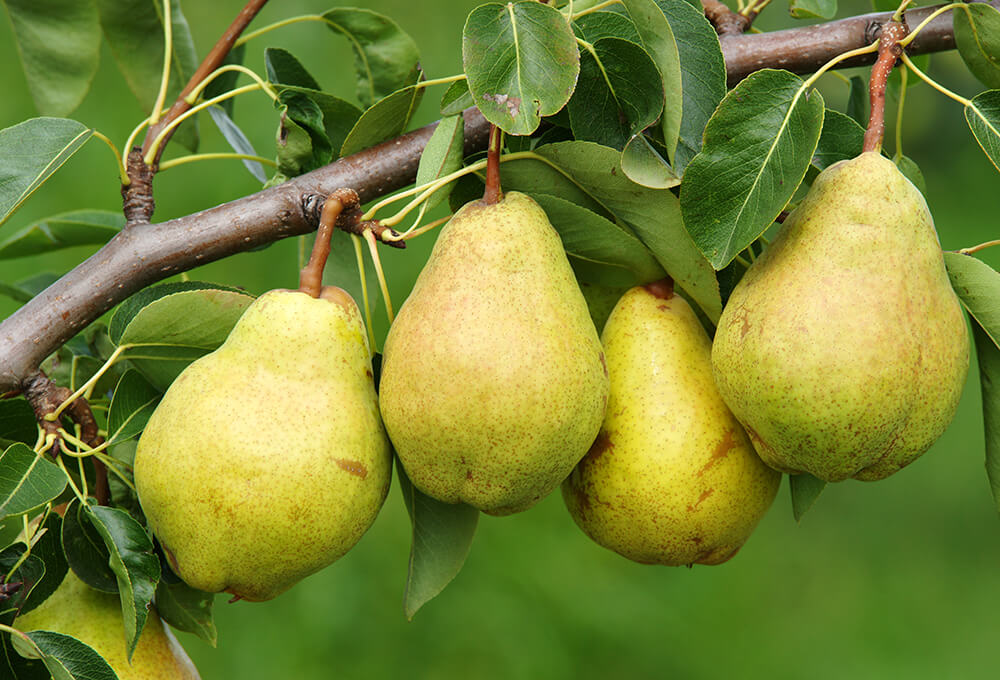 You may be interested in:
You may be interested in:Gardeners reviews
Vasily (Moscow region):
“I inherited from my grandfather a November pear. This tree was selected in Soviet times. It does not require special care, it grows by itself. Sometimes I fertilize it with rotted manure, in spring and autumn I cut dry branches. The fruits are small, but very sweet and tasty, stored for a long time. The tree brings a crop every year. ”
Marina (Murmansk):
“The November pear is growing on our site. We love our tree and carefully care for it. Fruits grow large, dense and sweet.Cook pear jam, often bake charlotte. If the pears are two months old, they become especially juicy and tasty. They say that such pears can be stored until next year, but this does not work for us: we eat them very quickly. ”
Pear Noyabrskaya - unpretentious tree with a modest color of the fruit. Due to its persistence, every year it pleases the owner with a plentiful harvest.

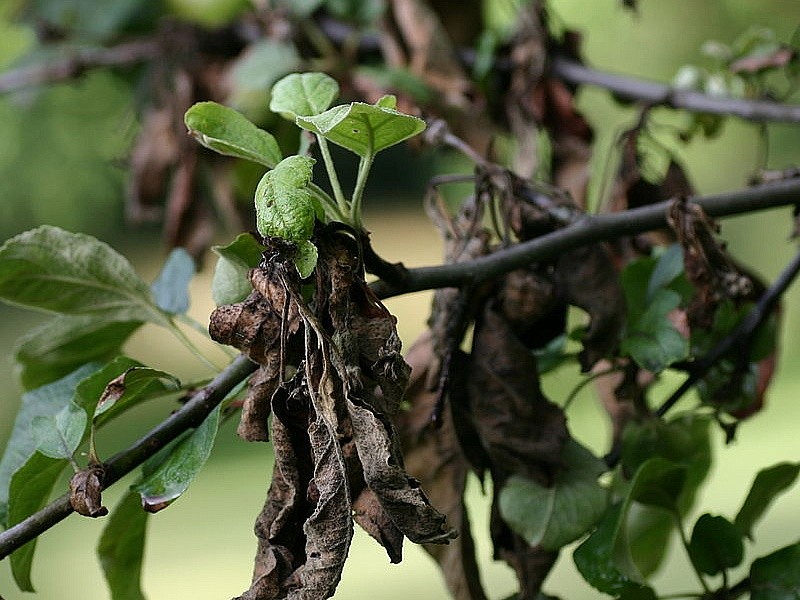 This drug from the pharmacy will help to cure the blackening and curling of foliage in a pear.
This drug from the pharmacy will help to cure the blackening and curling of foliage in a pear.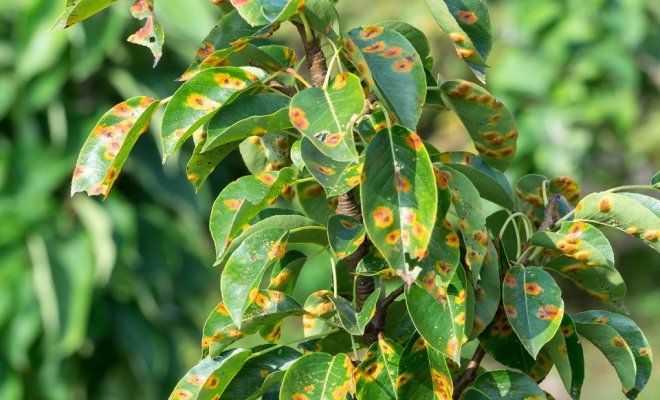 Are orange spots on pear leaves a disease? How to treat?
Are orange spots on pear leaves a disease? How to treat?